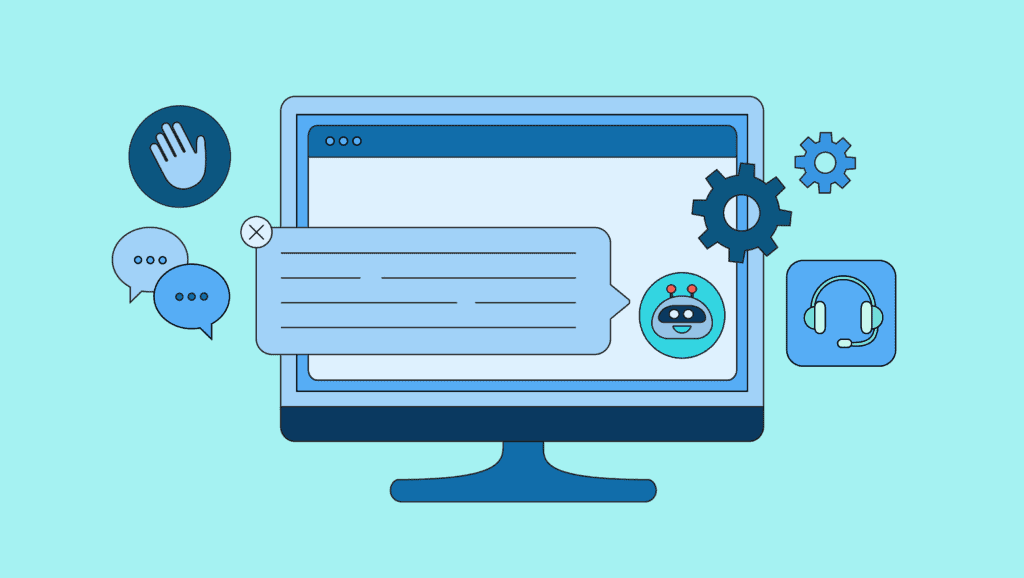In the fast-paced world of technology, keeping up with the latest trends and terminologies is crucial. Generative AI is one such cutting-edge field that has been making waves in recent years. If you’re intrigued by the concept of generative AI, let’s delve deeper into its terminology and concepts. You’ve come to the right place.
What is Generative AI?
Generative AI, or Generative Artificial Intelligence, is a subset of artificial intelligence that focuses on creating machines and algorithms. These algorithms can generate content that’s indistinguishable from content created by humans. This technology has a wide range of applications, from text generation to image and video synthesis. It’s the driving force behind chatbots, content creation tools, and much more.
Real-World Example: Chatbots in Customer Support
Imagine a scenario where a customer interacts with a chatbot to resolve a technical issue. The chatbot generates responses using a Generative AI model, making the conversation seamless and efficient.
Understanding the Basics
Generative AI Models
Generative AI Models are algorithms designed to generate data. They serve as the core building blocks of generative AI, enabling the creation of text, images, and even music. Notable examples include GPT-3, DALL-E, and OpenAI’s models.
Natural Language Processing (NLP)
NLP is a critical component of generative AI. It focuses on the interaction between humans and computers through natural language. NLP algorithms are essential for understanding and generating human-like text.
Training Data
Training data forms the foundation of generative AI models. These datasets provide the models with the knowledge and context they need to generate content. The quality and quantity of training data directly impact the model’s performance.
Neural Networks
Neural networks mimic the structure and function of the human brain. In generative AI, they play a vital role in processing and generating data. Deep learning, a subset of neural networks, is often used to create sophisticated generative AI models.
The Impact of Generative AI
Content Creation
Generative AI is revolutionizing content creation. It can produce articles, blog posts, and marketing materials, saving both time and resources. It not only saves time but also opens up new possibilities for content creators.
Chatbots and Virtual Assistants
Chatbots and virtual assistants, such as Siri and Alexa, rely on generative AI for their conversational abilities. They provide information, answer questions, and perform tasks, thanks to this technology.
Art and Design
Generative AI has found its way into the art world. Artists use AI to generate unique artworks and designs, blurring the line between human and machine creativity.
Healthcare and Medicine
In the medical field, generative AI assists in diagnosing diseases and predicting patient outcomes. Its ability to analyze large datasets is invaluable to healthcare professionals.
Challenges and Ethical Considerations
Bias in AI
Generative AI models can inherit biases present in their training data. This raises concerns about fairness and discrimination in AI-generated content.
Examples of Bias in AI
Consider an AI-generated hiring tool that inadvertently favors male candidates due to historical biases in hiring data. Such biases can perpetuate discrimination in the hiring process.
Copyright and Plagiarism
The use of generative AI in content creation raises questions about copyright and plagiarism. It’s crucial to ensure that AI-generated content complies with intellectual property laws.
Tips for Content Creators
To avoid copyright issues, content creators should always review and edit AI-generated content, ensuring it is original and properly attributed if it includes third-party material.
Security and Privacy
As generative AI becomes more sophisticated, there is a growing need to address security and privacy concerns. AI-generated deepfakes, for example, can be used for malicious purposes.
Limitations and Ongoing Challenges
Generative AI is a powerful technology, but it’s not without limitations. Ongoing challenges include improving the understanding of context, reducing biases, and enhancing the control and transparency of AI-generated content.
Conclusion
Generative AI is a transformative technology that is reshaping various industries. As we continue to explore its capabilities and limitations, it’s essential to consider the ethical and societal implications it raises.
FAQs
Q1: What is Generative AI?
Generative AI, or Generative Artificial Intelligence, is a subset of AI that focuses on creating machines and algorithms capable of generating content indistinguishable from human-created content.
Q2: How is Generative AI used in content creation?
Generative AI is used to produce articles, blog posts, marketing materials, and more, saving time and opening up new possibilities for content creators.
Q3: What are the ethical considerations in Generative AI?
Ethical considerations in Generative AI include biases in AI models, copyright and plagiarism issues, and security and privacy concerns.
Q4: What is the role of neural networks in Generative AI?
Neural networks, which mimic the human brain’s structure, play a vital role in processing and generating data in Generative AI.
Q5: How does Generative AI impact the healthcare field?
Generative AI assists in healthcare by diagnosing diseases and predicting patient outcomes, leveraging its data analysis capabilities.




